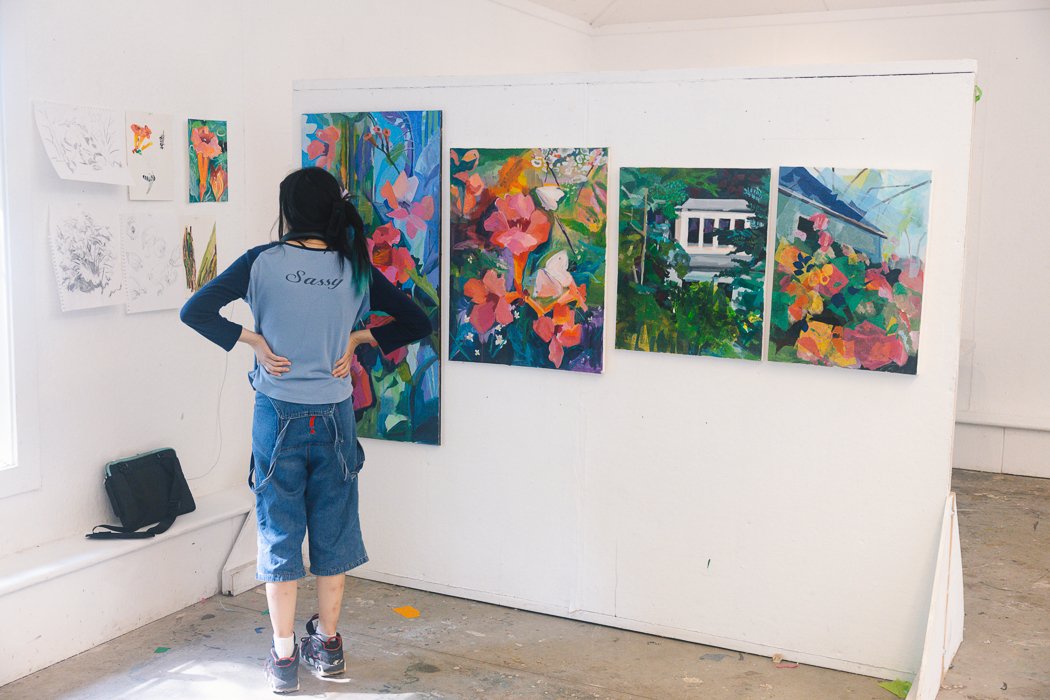Alberto Aguilar on the Practice of Partying
In 2011 Alberto Aguilar invited 1,000 strangers, using a popular social network site, into his home for a Personal Dinner Invitation. What resulted was a gathering that sat somewhere in between social experiment, party, and performance. Not everyone accepted the offer, Aguilar clarified, but a courageous number of people showed up—even though the invitation was mysterious and elusive—to this ordinary event with, as Aguilar described it, “a slightly eccentric” twist. After the event's successful happening, Aguilar was invited to stage several more renditions of similar events. The series culminated in 2015 in its most extreme form; titled Weddings Unknown, Aguilar facilitated a marriage between a couple in front of 200 strangers.
The epic scope of this project isn’t an isolated incident in Aguilar’s work. More recently, he was invited by the Chicago Humanities Festival to host a day-long party throughout the Pilsen neighborhood. The event was bookended by Museum Church in the morning and a music set in the evening. The all-day affair took place at a variety of locations, including the parking lot of the National Museum of Mexican Art, where Aguilar invited 21 artists to bring their cars, giving them the loose prompt to “use their cars as a site of performance, engagement, or to show their cars as an artwork.” When two of the artists Aguilar invited didn’t have a car, they rented a Uhaul and invited 18 more artists to join them in the truck nestled in the corner of the lot. “That corner of the parking lot was the most dynamic,” Aguilar said, and explained that it also embodied one of the most important aspects of facilitating parties: leaving room for the unexpected.
Like many individuals, especially parents, party planning has played a strong role in Aguilar’s personal life. It was at one of his children’s birthday parties that he developed his tried and true “Celebratory System,” a measured and systematic mode of installing streamers, which has since made its way into multiple exhibitions and events created by Aguilar. At first glance “Celebratory System” might sound oxymoronic, but there’s a savvy logic to it. Aguilar insists that rules play an essential function to his facilitations, a concept affirmed by Priya Parker, author of The Art of Gathering. “An artful rule is culture-creating,” Parker writes in one of her essays. For Aguilar’s upcoming session of a research studio class, his students are hosting a Halloween party in which they all come dressed as their alter ego. Here the rules are simple: come dressed in a costume, contribute to the party (ie. food, games, decor), and bring no more than one guest. The parameters create a shared culture in which students, with the alter ego prompt specifically emboldening them to “be more of themselves [in a way] that falls within their artistic sensibility. And then of course there's the element of surprise that follows.”
“The party is part of what happens when I go to Ox-Bow,” Aguilar explained. Every visit to campus has included a gathering instigated or furthered by Aguilar. On one occasion, Aguilar kept the location of the party a secret and instead told residents to look for flashing lights at exactly 8:55 p.m. At a dance party, he served up Coney Island turkey dogs topped with a 50-ingredient mole. And at our first ever summer concert, Aguilar kept things festive with conceptual face painting. Now in 2025, Aguilar will step in as one of the new co-faculty of Party as Form, in which he’ll bring years of personal, professional, and intuitive party expertise.
Enrollment for Party as Form opens March 31, 2025 at 10:00 a.m. ET.
Alberto Aguilar (he/his/they) is a Chicago-based artist that uses the party as form to create a shared public moment. In "A Personal Dinner Invitation” he invited strangers into his home to experience a normal dinner party with a slightly amplified program. In 2015 he organized “Wedding to Unknown" where a couple was married and celebrated before 200 unsuspecting guests. In 2024 he organized a block party in Pilsen by invitation of the Chicago Humanities Festival. This event happened throughout a single day in and around The National Museum of Mexican Art. The day began with “Museum Church", which was meant to give attendees a sense of grounding. For “Auto Portrait Spectacular,” 24 artists were invited to show their cars as vehicles of public engagement, installation or as artworks themselves in the museum parking lot. Along with the cars there were performances and live music that unfolded throughout the night as well as Aguilar’s signature 50 ingredient mole served to the public by a food truck. Alberto is the recipient of the 2024 Latinx Artist Fellowship. He has appeared in the Creative Independent as well as NYU’s Latinx Project.
This article was written by Shanley Poole, Engagement Liaison & Storyteller and was based on an interview conducted in 2024.



































































































